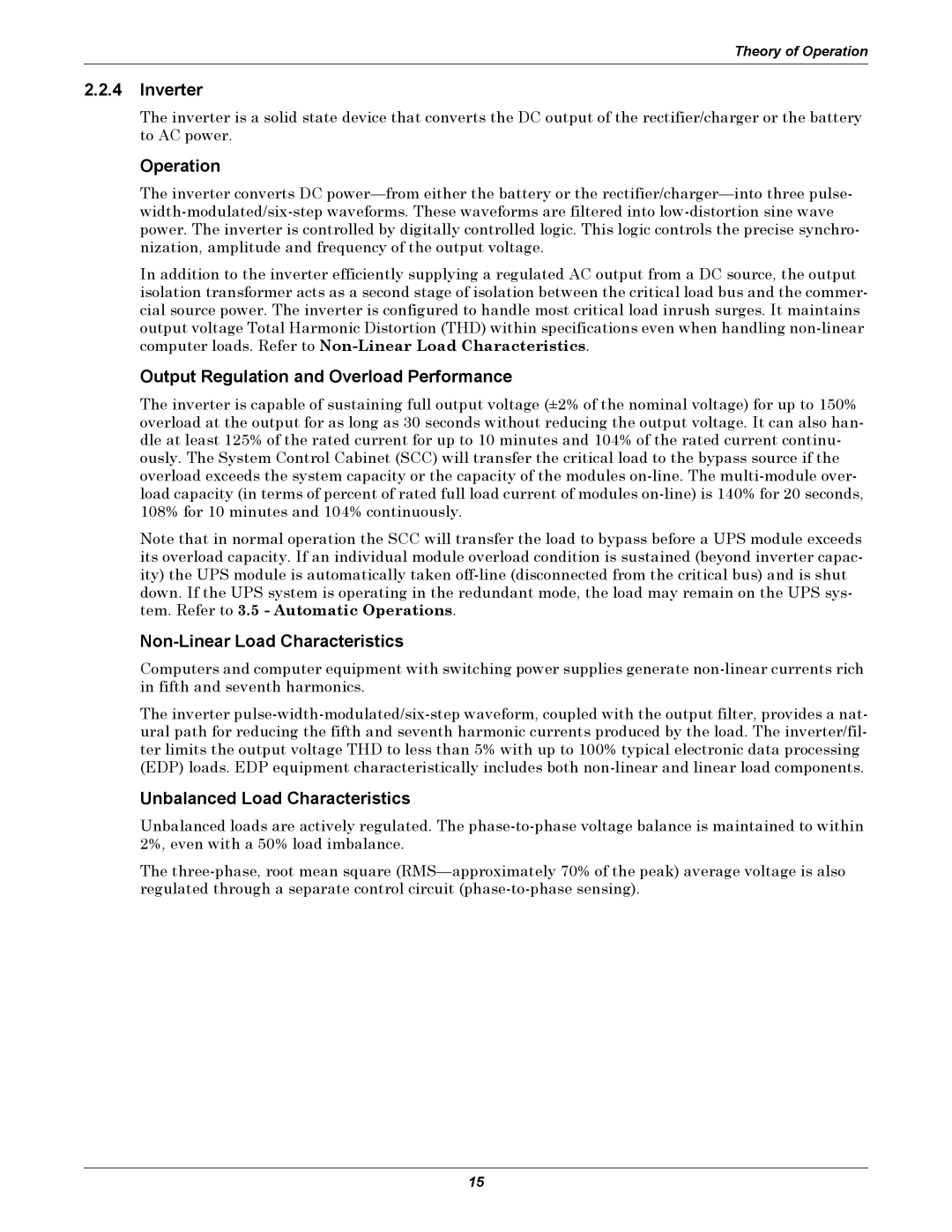
Theory of Operation
2.2.4Inverter
The inverter is a solid state device that converts the DC output of the rectifier/charger or the battery to AC power.
Operation
The inverter converts DC
In addition to the inverter efficiently supplying a regulated AC output from a DC source, the output isolation transformer acts as a second stage of isolation between the critical load bus and the commer- cial source power. The inverter is configured to handle most critical load inrush surges. It maintains output voltage Total Harmonic Distortion (THD) within specifications even when handling
Output Regulation and Overload Performance
The inverter is capable of sustaining full output voltage (±2% of the nominal voltage) for up to 150% overload at the output for as long as 30 seconds without reducing the output voltage. It can also han- dle at least 125% of the rated current for up to 10 minutes and 104% of the rated current continu- ously. The System Control Cabinet (SCC) will transfer the critical load to the bypass source if the overload exceeds the system capacity or the capacity of the modules
Note that in normal operation the SCC will transfer the load to bypass before a UPS module exceeds its overload capacity. If an individual module overload condition is sustained (beyond inverter capac- ity) the UPS module is automatically taken
Non-Linear Load Characteristics
Computers and computer equipment with switching power supplies generate
The inverter
Unbalanced Load Characteristics
Unbalanced loads are actively regulated. The
The
15
